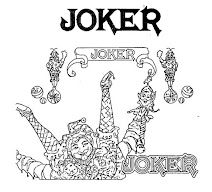Republic Technologies opposed an application to register the mark NOJOKE for "Electronic cigarette liquid (e-liquid) comprised of flavorings in liquid form, other than essential oils, used to refill electronic cigarette cartridges; Electronic cigarettes and oral vaporizers for smokers," claiming a likelihood of confusion with the two registered marks shown below, for "cigarette paper." Opposer argued that the shared element JOKE in all the marks makes them similar in appearance and sound, and is central to their meanings and commercial impressions. It contended that the goods are related because they all fall under the category of "tobacco products." How do you think this came out? Republic Technologies (NA), LLC v. Vapewear, Inc., Opposition No. 91253787 (April 26, 2022) [not precedential] (Opinion by Judge Angela Lykos).

The Goods: The Board found that the involved goods are related because they are sold by the same retailers. In addition, 18 third-party registrations covering both types of goods demonstrated that the involved goods are of a type that may emanate from a single source under one mark. Moreover, the channels of trade overlap - convenience stores and gas stations - and are sold to the same classes of consumers who are likely to exercise only ordinary care in their purchases.
Strength of Opposer's Marks: The Board noted that, as with all tobacco products, federal law limits the advertising of cigarette papers. With that in mind, the Board considered opposer's evidence of use of the JOKER marks since 1975, the many retail outlets for its cigarette papers, trade show promotions, and point-of-sale materials. The Board, however, was unable to find that the JOKER marks "fall on the high end of the spectrum of fame or strength." There was no evidence regarding opposer's sales and advertising expenditures in the U.S., and to the Board concluded that the marks fall "on the lower end of the spectrum, and have "relatively modest" strength.
The Board also found that the JOKER marks are inherently distinctive, and it accorded them the "normal scope of protection" of distinctive marks.
The Marks: Opposer contended that the marks "approach the theme of a joke from different directions - JOKER in the affirmative and NO JOKE in the negative - but both call to mind the same concept," rendering the marks "associative terms." Thus, consumers will perceive applicant's mark as a product line extension from opposer.
The Board was unimpressed. "Opposer's arguments amount to an improper dissection of the marks." Comparing the marks as a whole, the Board found them dissimilar. The marks have "markedly different connotations and commercial impressions."
NOJOKE is a recognized expression that emphasizes the truthfulness of something potentially unbelievable, and communicates an air of seriousness. By contrast, Opposer's stylized and composite JOKER marks convey the impression of a court jester, a comic foolish clown. Thus, despite their common associative term, the meanings of these marks and the impressions they give share no similarity.
The Board found that "[t]he whimsical distinct design features of Opposer's composite mark are dominant and further avoid a likelihood of confusion." The Board therefore ruled that that the first DuPont factor weighed against a finding of likelihood of confusion.
Conclusion: Deeming the first DuPont factor was dispositive, the Board dismissed the opposition.
Read comments and post your comment here.
The content of this article is intended to provide a general guide to the subject matter. Specialist advice should be sought about your specific circumstances.
